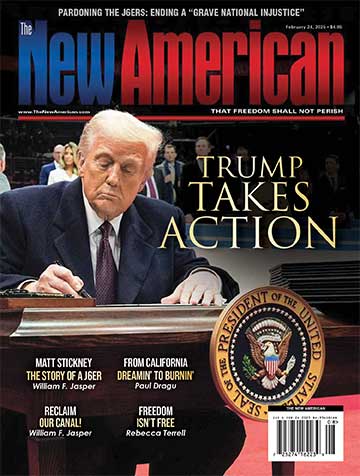There are zero academic subjects in which more than half of America’s public “education” students are proficient. That’s according to the government’s own assessment, the Nation’s Report Card.
Last week, the Department of Education released a statement in response to the latest dismal report card. It said, in part:
Despite the billions of dollars that the federal government invests in K-12 education annually, and the approximately $190 billion in federal pandemic funds, our education system continues to fail students across the nation. We must do better for our students. The Trump Administration is committed to reorienting our education system to fully empower states, to prioritize meaningful learning, and provide universal access to high-quality instruction. Change must happen, and it must happen now.
According to multiple reports, among the changes President Donald Trump is considering is the complete abolition of the Education Department, something that will require an act of Congress. Nevertheless, that isn’t stopping Trump’s team from trying to diminish the department’s destructive impact for the time being.
On Monday, The Wall Street Journal reported that “Trump administration officials are weighing executive actions to dismantle the Education Department”:
The officials have discussed an executive order that would shut down all functions of the agency that aren’t written explicitly into statute or move certain functions to other departments, according to people familiar with the matter. The order would call for developing a legislative proposal to abolish the department, the people said. Trump’s advisers are debating the specifics of the order and the timing, the people said.
The Washington Post published a similar report, saying Trump is preparing an executive order “aimed at eventually closing the Education Department and, in the short term, dismantling it from within, according to three people briefed on its contents.”
It Has Begun
That process has begun, WaPo reported. The Trump administration has been trying to reduce the workforce by putting employees on administrative leave and pushing staff to voluntarily quit. About 20 people with the Department of Government Efficiency (DOGE) have begun looking to cut spending and staff.
The Journal reported that Trump’s aides “could replicate the approach they used to disassemble the core functions of the U.S. Agency for International Development (USAID),” which included gaining access to documents at the agency, shutting down its website, deactivating email addresses, and telling employees not to come to the office.
History Lesson
Former President Jimmy Carter created the Education Department in 1979 at the behest of the National Education Association, the country’s largest teachers union. The Department monitors student performance, promotes practices purportedly intended to foster learning, enforces so-called civil rights protections, and doles out money to school districts. According to Chalkbeat, the department funds about 11 percent of U.S. public schools’ cost, not an small amount for struggling school districts, which most believe themselves to be.
Like former president Ronald Reagan, and numerous presidential candidates including Bob Dole, Newt Gingrich, Ron Paul, and Rick Perry, Trump has vowed to shut down the department of education and “move everything back to the states.” Representative Thomas Massie (R-Ky.) supports his ambition. Last week, he introduced a bill to abolish the Education Department by the end of 2026. “Unelected bureaucrats in Washington, D.C., should not be in charge of our children’s intellectual and moral development,” Massie said in a statement. “States and local communities are best positioned to shape curricula that meet the needs of their students.”
No More Woke
But the department during Trump’s fresh tenure has also been busy making changes. It has released statements saying it would evaluate claims of sex discrimination based on the “objective immutable characteristic of being born male or female” as opposed to gender identity. The president has also signed separate executive orders instructing the education secretary to work on plans to purge schools of “radical indoctrination” and expanding school choice. President of the American Federation of Teachers Randi Weingarten noted the irony. Trump’s recent executive orders signaled that “the federal government should be more, not less, involved in education,” she told the Journal.
End Fed Ed
The New American has for years taken the constitutionally aligned stance that the federal government has no place in education. We have pointed out that the template for today’s failing school system was really an indoctrination program designed by atheistic socialists such as John Dewey and Horace Mann. We have published reports highlighting the much higher learning levels of 19th century youth compared to those of today.
Charlotte Iserbyt, who served as the senior policy advisor in the Office of Educational Research and Improvement (OERI) in Reagan’s Education Department, wrote a book titled The Deliberate Dumbing Down of America in which she makes the case that the American public education system is really a conditioning program designed to create socialist-minded Americans who will not resist the eventual submergence of America into a one-world socialistic government.
If you’re looking for alternative options to public schools, we encourage you to look into our affiliate online classical school, FreedomProject Academy.



